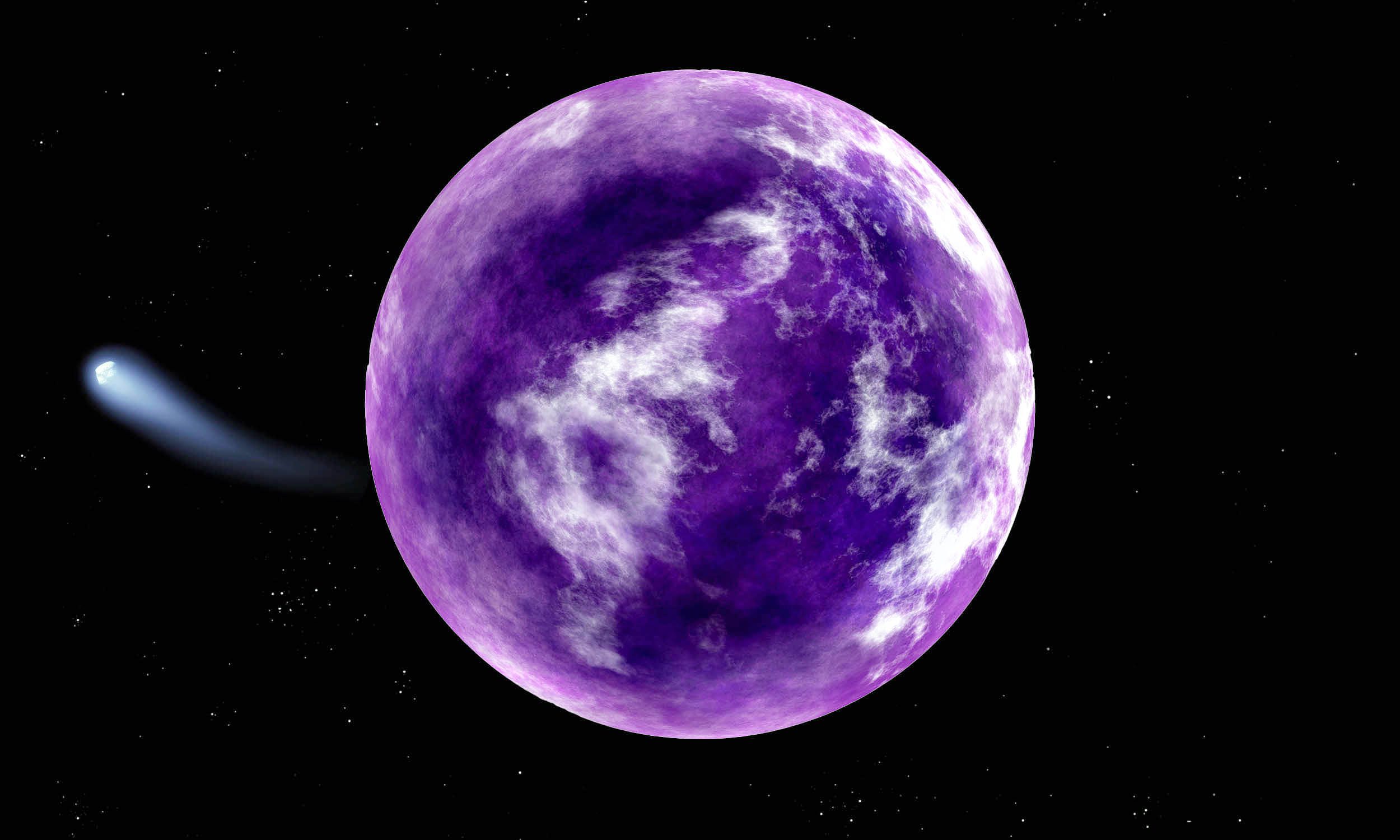
Surprisingly, some researchers propose that the earliest life forms on Earth may have adorned our planet in hues of purple rather than the familiar greens we see today.
This concept, termed the Purple Earth hypothesis, posits that early single-celled organisms utilized a simpler molecule than chlorophyll to capture sunlight.
Research supported by NASA indicates that retinal may have been this crucial pigment, endowing these microbes with a vibrant violet shade.
This intriguing idea has been explored by astrobiologist Dr. Edward Schwieterman from the University of California, Riverside, alongside Professor Shiladitya DasSarma from the University of Maryland.
The Basics of Chlorophyll
Chlorophyll is the green pigment responsible for the vibrant appearance of plants, algae, and certain bacteria. More importantly, it plays a pivotal role in photosynthesis—the mechanism by which plants convert sunlight into energy.
Without chlorophyll, life as we know it would not exist, as it marks the starting point for producing the oxygen we breathe and the food we consume.
This pigment absorbs light predominantly from the blue and red spectrum while reflecting green light, which is why leaves appear green.
Chlorophyll is stored within tiny organelles called chloroplasts, where photosynthesis occurs.
Early Life and a Different Pigment
While today’s plants depend on chlorophyll, it’s suggested that this may not have been the initial choice for photosynthesis on Earth. Instead, retinal, a less complex molecule, likely thrived when atmospheric oxygen levels were low.
During this early era, characterized by low oxygen and murky skies, it is believed that sunlight was sufficiently abundant to support these purple microbes, resulting in a drastically different landscape compared to today’s lush greenery.
Many of these ancient organisms belonged to a group known as archaea, which flourish in harsh environments where most other life forms cannot survive.
An interesting example is halobacterium, a brightly colored purple microbe that thrives in saline environments like the Great Salt Lake.
Despite its name, halobacterium is classified as an archaeon, utilizing photosynthesis in a unique manner. It absorbs green light through retinal and reflects red and blue light, creating its striking violet appearance.
From Purple Earth to Green
As time progressed, other organisms evolved to utilize the more effective pigment chlorophyll, enhancing their ability to absorb sunlight at more energetic wavelengths.
This transition eventually obscured the retinal-based mechanisms and contributed to the Great Oxygenation Event, a period during which atmospheric oxygen levels surged dramatically.
While retinal-utilizing life did not vanish, it lost its status as the dominant colorizer of the planet, allowing chlorophyll-dependent organisms to flourish and transform Earth’s visual palette from purple to green.
Pursuing Colorful Life Beyond Earth
Astrobiologists speculate that exoplanets could be home to organisms that still utilize retinal.
“If the Purple Earth hypothesis holds true and purple organisms once dominated early Earth, we might discover a planet still in that evolutionary phase,” remarked DasSarma.
Color signals emanating from these distant worlds could provide insights into whether simple life forms resembling ancient purple organisms exist elsewhere. Early retinal-based photosynthesis could symbolize a precursor to more advanced pigmentation.
Modern-Day Purple Pockets
While our planet is predominantly green now, locations such as the Dead Sea still exhibit vibrant violet shades due to the presence of halobacterium. These resilient microbes thrive in extreme saline conditions that are inhospitable to most other life forms.
By studying these colorful enclaves, researchers enhance their understanding of how purple life might endure in extraterrestrial environments with similar challenges. Observations of these microbes also assist scientists in refining the signals they may search for on exoplanets.
Today’s plant life reflects a distinct red edge, where leaves absorb substantial amounts of red light while reflecting specific infrared wavelengths. In contrast, retinal would likely produce a different kind of spectral imprint peaking in the green spectrum.
Scientists are advocating for the development of new instruments that can capture a broader spectrum of wavelengths to identify such signatures, expanding our understanding of what life might resemble on other planets orbiting distant stars.
Looking Ahead
Advancements in telescope technology are anticipated to provide more detailed examinations of exoplanet atmospheres and surfaces.
Researchers are hopeful that they can identify color patterns indicative of biological processes, whether they mimic chlorophyll or exhibit completely different characteristics. Confirming the existence of a Purple Earth phase would serve as a significant reminder of the diverse paths life can take.
“This serves as another reference point among a multitude of potential biosignatures we can explore elsewhere,” advised Schwieterman.
The Importance of Earth’s Purple History
Though the Purple Earth hypothesis remains unverified, it inspires fresh perspectives on our planet’s past and the quest for extraterrestrial life.
If the earliest successful photosynthesizers on Earth indeed glowed in purple, that color might reappear wherever organisms adopt retinal as their primary solar collector.
This thought-provoking concept emphasizes life’s remarkable ability to adapt in unexpected ways. It also encourages the search for signals we might otherwise overlook if we concentrate solely on contemporary examples.
The findings are detailed in the journal Astrobiology.
—–
Enjoyed the article? Subscribe to our newsletter for captivating articles, exclusive content, and the latest news.
Explore more at EarthSnap, a complimentary app brought to you by Eric Ralls and Earth.com.
—–









